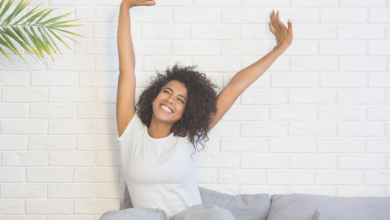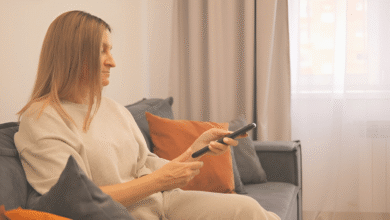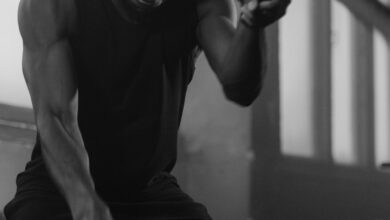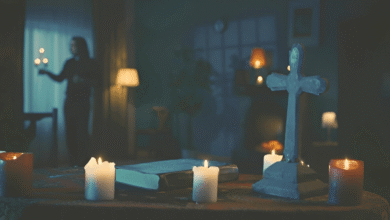Color Psychology in Decor: Transform Your Space & Mood
Color psychology in decor transforms spaces & moods. Discover how hues affect emotions and mood-boosting interiors with strategic color.
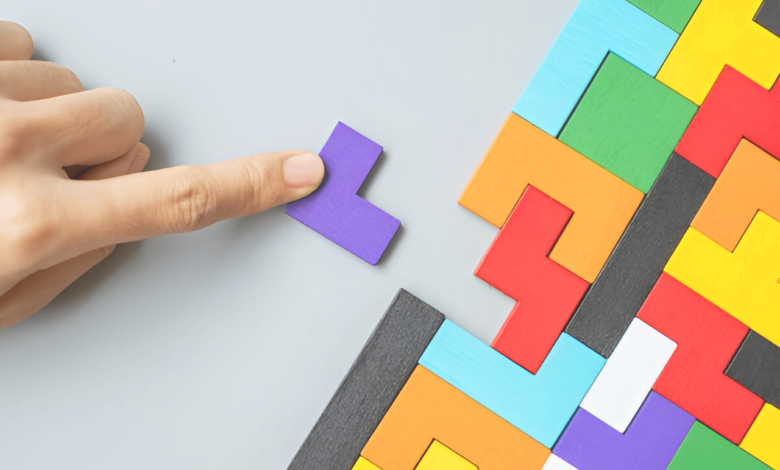
Color psychology in decor is a fascinating concept that explores how different hues influence our emotions, behaviors, and overall well-being. The colors we surround ourselves with can evoke specific moods calming us, energizing us, or even affecting our productivity. Whether you’re redesigning your living room, bedroom, or workspace, understanding the psychological impact of colors allows you to craft an environment that aligns with your desired atmosphere. From serene blues that promote relaxation to vibrant yellows that spark creativity, each shade has a unique effect on our minds. By harnessing the power of color psychology in decor, you can transform any space into a sanctuary that enhances your daily life.
The connection between color and emotion is deeply rooted in both science and culture. Studies show that certain colors can lower stress levels, improve focus, or even stimulate appetite. Warm tones like red and orange create a sense of warmth and excitement, while cool tones like blue and green foster tranquility and balance. Beyond aesthetics, the strategic use of color can influence how we perceive a room’s size, lighting, and even temperature. Whether you prefer bold, dramatic palettes or soft, neutral backdrops, the principles of color psychology in decor can help you make intentional design choices that elevate your space and uplift your mood.
Color Psychology in Decor
The Science Behind Color Psychology
Color psychology examines how different shades impact human emotions and behaviors. Studies have shown that colors can stimulate various psychological responses some hues promote relaxation, while others boost energy and creativity. This connection between color and mood is deeply rooted in both biological and cultural influences. For instance, warm colors like red and orange are often associated with excitement and passion, whereas cool tones like blue and green evoke calmness and tranquility. By leveraging these effects, you can design spaces that enhance well-being and functionality.
How Different Colors Affect Mood and Atmosphere
Blue is Calmness and Serenity
Blue is widely recognized for its soothing properties, making it an excellent choice for bedrooms and bathrooms. Lighter shades like sky blue promote relaxation, while deeper tones such as navy add sophistication and depth. However, excessive use of blue in workspaces may lead to lowered energy levels, so balance is key.
Green is Balance and Renewal
Associated with nature, green creates a harmonious and refreshing ambiance. It reduces stress and fosters a sense of renewal, making it ideal for living rooms and home offices. Sage green offers subtle tranquility, while emerald green adds a luxurious touch.
Yellow is Energy and Positivity
Yellow is the color of sunshine, known to uplift spirits and stimulate mental activity. It works well in kitchens and dining areas but should be used sparingly in bedrooms, as too much yellow can cause restlessness. Soft buttery tones are more soothing than bright neon shades.
Red is Passion and Intensity
Red is a bold, dynamic color that raises energy levels and sparks conversation. It’s great for dining rooms and social spaces but should be avoided in bedrooms as it can increase heart rate and disrupt sleep. Burgundy and terracotta offer a more subdued alternative.
Purple is Creativity and Luxury
Purple combines the calm of blue and the energy of red, making it perfect for creative spaces. Lavender promotes relaxation, while deep plum exudes opulence. It’s a great accent color for bedrooms and meditation areas.
Neutral Tones Versatility and Elegance
Neutrals like white, beige, and gray provide a timeless backdrop that complements any decor style. White enhances brightness and simplicity, while warm grays add sophistication. These shades are ideal for creating a minimalist or Scandinavian inspired aesthetic.
Choosing the Right Colors for Each Room
Living Room
Since living rooms are social hubs, warm tones like terracotta, soft yellows, and earthy greens foster a welcoming atmosphere. Accent walls in deeper shades can add dimension without overwhelming the space.
Bedroom
Cooler tones like soft blues, lavenders, and muted greens promote relaxation. Avoid high-contrast or overly bright colors that may interfere with sleep quality.
Energizing and Clean
White kitchens feel fresh and spacious, while pops of red or yellow can stimulate appetite and conversation. Wooden accents add warmth and balance.
Focus and Productivity
Green and blue enhance concentration, while neutral backgrounds reduce distractions. Avoid overly bright colors that may cause eye strain over time.
Spa-Like Retreat
Light blues, seafoam greens, and crisp whites create a serene, clean environment. Metallic accents in gold or silver add a touch of luxury.
Cultural and Personal Influences on Color Perception
Color meanings can vary across cultures for example, white symbolizes purity in Western cultures but represents mourning in some Eastern traditions. Personal experiences also shape how we perceive colors, so it’s essential to choose hues that resonate with you.
Practical Tips for Incorporating Color Psychology in Decor
Start with a Neutral Foundation
Begin by establishing a neutral base for walls and large furniture pieces using shades like warm beige, soft gray, or crisp white. This creates a versatile canvas that allows you to experiment with bolder accent colors through decor elements. Neutral backdrops also make spaces feel larger and more cohesive while letting your chosen psychological colors take center stage.
Apply the 60-30-10 Color Rule
Divide your color scheme into percentages for visual harmony: use 60% for dominant neutral tones on walls and floors, 30% for secondary colors in upholstery and curtains, and 10% for vibrant accents in throw pillows and artwork. This balanced approach prevents overwhelming the senses while still leveraging color psychology effectively. For bedrooms, this might mean soft blue walls, taupe bedding, and coral decorative pieces.
Test Colors in Actual Lighting Conditions
Paint colors transform under different lighting, so always test swatches on your walls before committing. Observe samples at various times of day – cool northern light may require warmer tones, while bright southern exposure can handle deeper hues. This ensures your chosen psychological colors maintain their intended mood effects around the clock.
Layer Colors Through Changeable Elements
Incorporate psychology-driven hues through easily swapped textiles and accessories rather than permanent fixtures. Add energizing yellow through throw blankets in a home office, calming blue via bathroom towels, or passion-red dishware in the kitchen. This flexible approach lets you adjust the emotional tone of rooms as needed without repainting.
Match Colors to Room Functions
Strategically select hues based on each space’s purpose: opt for focus-enhancing greens in workspaces, sleep-promoting lavenders in bedrooms, and appetite-stimulating oranges or reds in dining areas. Even small spaces like entryways benefit from welcoming warm tones that create positive first impressions. Always consider how color psychology can enhance the room’s primary activities.
Use Color to Influence Spatial Perception
Lighter colors make small rooms appear more spacious, while darker shades create intimacy in large areas. Warm tones advance visually (making walls feel closer), and cool tones recede (creating depth). Apply this principle to manipulate how spaces feel – for example, painting a long narrow hallway in pale blue to make it seem wider.
Read More: Budget-Friendly Interior Upgrades That Look Expensive
Conclusion
Color psychology in decor proves that our surroundings have a profound influence on our mental and emotional well-being. By intentionally selecting hues that align with the energy you want to cultivate, you can turn any room into a space that nurtures relaxation, creativity, or productivity. Whether through bold accent walls, soothing neutrals, or vibrant decor pieces, the strategic use of color allows you to shape not just the aesthetics of your home but also the way you feel within it. The right palette can make a small room feel spacious, a dim area feel brighter, and even influence how you interact with others in the space.
Ultimately, color psychology in decor is about more than just trends it’s about creating environments that support your lifestyle and emotional needs. Experiment with different shades, observe how they make you feel, and don’t be afraid to adjust until you find the perfect balance. Your home should be a reflection of your personality while also serving as a sanctuary that enhances your daily life. With thoughtful color choices, you can transform any space into one that not only looks beautiful but also fosters happiness, calm, and inspiration.
FAQs
How does color psychology work in home decor?
Color Psychology trigger emotional and psychological responses, influencing mood and behavior. Choosing the right shades can create a desired atmosphere in any room.
Which colors are best for a relaxing bedroom?
Soft blues, lavenders, and muted greens promote relaxation, while avoiding bright reds or yellows helps maintain a peaceful environment.
Can color choices affect productivity in a home office?
Yes, greens and blues enhance focus, while overly bright colors may cause distraction. Neutral backgrounds with subtle accents work best.
Are there cultural differences in Color Psychology meanings?
Absolutely Color Psychology carry different symbolic meanings across cultures, so consider personal and cultural associations when decorating.
How can I experiment with color without repainting?
Use throw pillows, rugs, curtains, and artwork to introduce color. These elements allow easy changes without permanent commitment.




